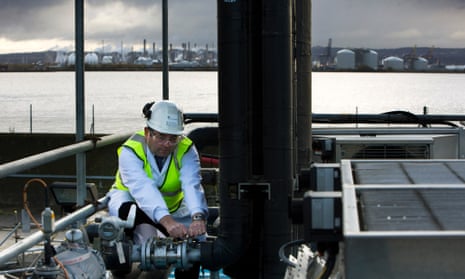The government has cut almost half a billion dollars from research into carbon capture and storage – which the Intergovernmental Panel on Climate Change (IPCC) deems crucial for continued use of coal – despite the prime minister insisting coal is the “foundation of our prosperity”.
Tony Abbott said on Tuesday: “For now and for the foreseeable future, the foundation of Australia’s energy needs will be coal. The foundation of the world’s energy needs will be coal.”
The IPCC synthesis report, released on Monday, found that to limit global warming to 2C “the share of low‐carbon electricity supply (comprising renewable energy, nuclear and carbon capture and storage) needs to increase from its current share of approximately 30% to more than 80% by 2050 and 90% by 2100, and fossil fuel power generation without CCS [carbon capture and storage] is phased out almost entirely by 2100”.
In the budget the government cut $459.3m over three years from its carbon capture and storage flagship program, leaving $191.7m to continue existing projects for the next seven years. The program had already been cut by the previous Labor government and much of the funding remained unallocated.
The coal industry has “paused” a levy on black coal producers, which was supposed to build a $1bn industry fund to also finance research and demonstration into clean coal technology. It cited low coal prices for the halt. $250m has been spent from the fund on demonstration plants and another $46m worth of grants are under assessment.
The objectives of Coal21, set up in 2006, have also been changed to allow the industry to use funding already collected to promote the use of coal. Its constitution now allows money to be spent on “promoting the use of coal both within Australia and overseas and promoting the economic and social benefits of the coal industry”. It is unclear whether any has been spent in this way.
Tony Wood, the energy program director at the Grattan Institute, said: “CCS is the only way Australia, and the world, can keep using coal and also do what it needs to do about climate change, but neither industry nor government seem to be serious about doing anything about it.”
Peter Cook, the former head of the CO2 co-operative research centre, and now the head of the Peter Cook centre for CCS research at the University of Melbourne, said Australia was not doing as much as we could or we should. “The research effort is fractured, the government has cut funding … the coal industry announced their Coal21 fund with great flourish but now they seem to have gone very quiet,” he said.
“Australia has lost momentum, lost impetus … even though we have a greater interest than most countries in this technology working.”
The Greens, and many in the conservation movement, have argued that carbon capture and storage does not work and is never going to be viable, and that renewable energy has “won the race”.
But John Connor, the chief executive of the Climate Institute, said CCS “has to be one of the clean energy options available because all the modelling says that to avoid temperature rises of more than two degrees, we have to take carbon dioxide out of the atmosphere”.
He was also critical of the efforts of Australian governments and industry. “Apart from a brief flutter of responsibility in the 2000s the industry has gone for the fast bucks and the fancy words rather than actually doing anything,” he said.
The G8 summit in Japan in 2008 pledged to build “20 large-scale CCS demonstration projects”. The first full-scale CCS power plant, the Boundary Dam Carbon Capture and Storage Project in the Canadian province of Saskatchewan, opened last month.

Comments (…)
Sign in or create your Guardian account to join the discussion